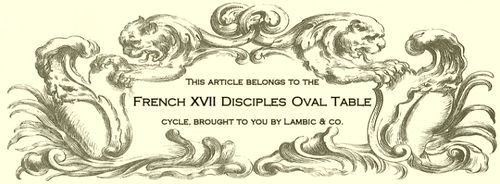Pierre Legrand
“Go west, young man, go west: I'll go east and see the Czarina!”
“From Russia, with love”
Pierre Legrand (pseudonym of Pjotr Alexejevitsch, Czar of Russia, born 1672 in Moscow (Russia), died 1725 in Dunkerque (France)), came to France in 1697 after a four-month stay in Zaandam, Holland, where he had learned the rudiments of ship-building, and some new words: he gave the Russian language the word "bushprit", derived from the Dutch "boegspriet" (bowsprit).
Hup, Holland, hup![edit | edit source]
The Dutch always have had a great reputation in watery business, and a great reputation concerning efficiency as well. No wonder they were able to teach Pjotr so much on such short notice. In less than four months he knew enough to build a boat all by his own, and then he hired a local Dutch comedian, one "André van Duin" ("Andrew Dune" in foreign manuals) as a stand-in, to return to Russia and reign in his place.
Vive la France![edit | edit source]
The Legrand Ship-building Society established[edit | edit source]
Having set foot on French territory, our Pjotr changed his name into Pierre Legrand (French for "Peter the Great"), and started his own ship-building shop in Dunkerque. His started his production with small life-boats, then upgraded to fishing-boats, and, at last, real, big vessels! Galleons were his favorite ships, and he built a lot of them. He was known for his custom-made Pirate ships, and some of the finest Pirates bought their ships from Pierre.
Famous Legrand vessels[edit | edit source]
Every sailor knows Jean Bart's galleon "Babelutte", but other illustrous ships have left the shipyard after that one: Edward teach, aka "Blackbeard", started his Pirate's career in 1713 on a Legrand vessel, the frigate "Teppeneus". John Rackham, aka "Calico Jack", ended his Pirate's career on another Legrand ship, the galleon "Cuberdon".
Pierre and Jean[edit | edit source]
The customer whom he was most proud of, was Jean Bart, the famous Flemish Pirate. Bart sailed Legrand's very first big vessel, the galleon "Babelutte", shortly before his retirement. So Pierre's first large ship was Jean's last. It was named after a Flemish type of "caramel" or toffee. Unlike said toffee, the "Babelutte" didn't stick to anything, but flew over the seven seas as a most gracious seagull. This fine vessel was easy to distinguish from later Legrand ships, because of the prow figure shaped as a Royal Dolphin, something only Jean Bart's ships were allowed to carry.
The real reason for his high treason[edit | edit source]
Did Pjotr really come to France to be a ship-builder? No. Actually, it was the way the XVII Disciples kept trying to invite the Russian Czar since 1669, that did it. The first invite came from Louis "Sunny Boy" XIV, who wanted a noble subsitute to attend to the First Convention, and the following years, the Disciples sent the invites themselves. For nearly 30 years, it had been the courier, Pjotr Mikhailovich Strogov "The Great", who had been the Czar's substitute, but this time, Pjotr wanted to go in person, and to stay. The French seemed much more civilized to him than the Russians, so finally he made his mind up.
The welcome at the Convention of 1698[edit | edit source]
The Disciples had been waiting so long for Pjotr/Pierre, and what do you think those two "enfants terribles", yes, I name Messrs. Molière and Lully judged a funny thing to do? They made a song to welcome the highest ranked member of the Convention. Here's the chorus:
“Legrand est arrivé-é-é, / Sans s'presse-e-er: / Le grand Legrand, / Le beau Legrand, / Avec son ch'val et tout transpirant!”
Fortunately, he had a well-developed sense of humor... Less fortunately, Molière nor Lully lived long enough to see the arrival of the Russian monarch happen. The surviving Disciples had adapted the lyrics, because the original lyrics went: "Le Czar est arrivé". The song emerged again in the second half of the XXth Century, with English lyrics, and became "Along came Jones".
Russia and the fake Czar[edit | edit source]
The Russians never knew they served under a stand-in, who kept reigning under the name of Peter the Great, nor that his descendance had nothing to do with the original Czar line. Well, now they know, I just let the cat out of the bag...




